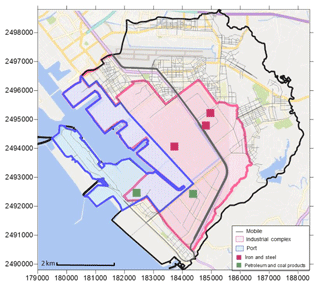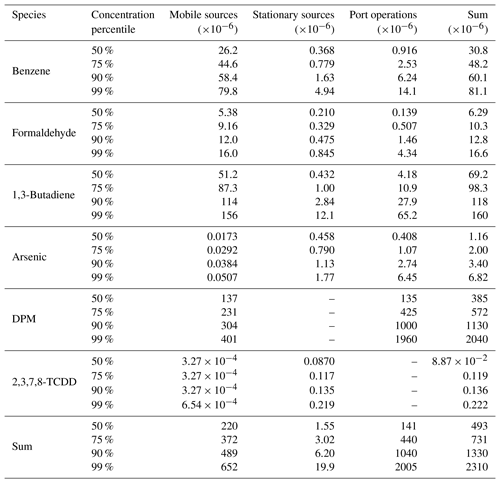Emission Characteristics and Risk Assessment in an Industrial Metropolitan Area in Taiwan using the AERMOD Model
Air toxics, also known as hazardous air pollutants (HAPs), have gained increased public awareness in recent years. Air toxics may be released from various sources, such as mobile sources, stationary sources, and fugitive emissions. This study investigated profiles of air toxics from mobile sources, stationary sources, and the operations in a port in an industrial metropolitan area in Taiwan. Six carcinogens, including benzene, formaldehyde, 1,3-butadiene, arsenic, 2,3,7,8-TCDD, and diesel particulate matter (DPM), were chosen as the target pollutants. The AERMOD model was applied to simulate the concentrations of the ambient air toxic species, and the concentrations were used to evaluate cancer risk. Cancer risk for each air toxic was also investigated to evaluate the potential impact on residents. The results of the emission estimation for the base year (2014) showed that the emissions of benzene, 1,3-butadiene, and formaldehyde could be mainly attributed to mobile sources in the study areas. The contributions, in order, were 86 %, 77 %, and 69 %. DPM emissions from port operations accounted for 76 %, and most of the arsenic (70 %) and 2,3,7,8-TCDD (99 %) were emitted from stationary sources, especially from the steel industry. Approximately 66 % and 32 % of the cancer risk of air toxics were contributed to the emissions from port operations and on-road vehicles, respectively, in this area, and approximately 1.4 % of the risk was contributed to stationary sources. DPM was the pollutant that posed the highest cancer risk among all six air toxics. It accounted for more than 80 % of the overall cancer risk, followed by 1,3-butadiene (10 %), benzene (4.7 %), formaldehyde (1.2 %), arsenic (0.7 %), and 2,3,7,8-TCDD (0.2 %). The dominant sources of DPM were ocean-going vessels and diesel trucks.










